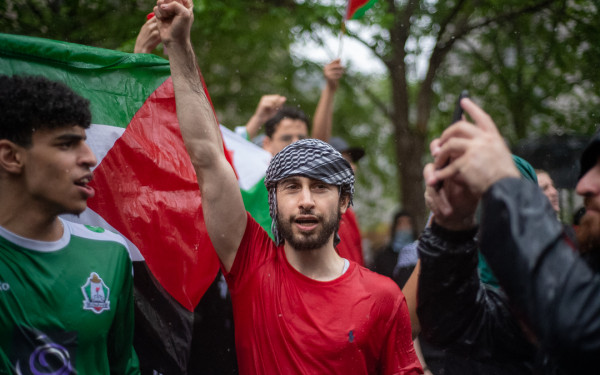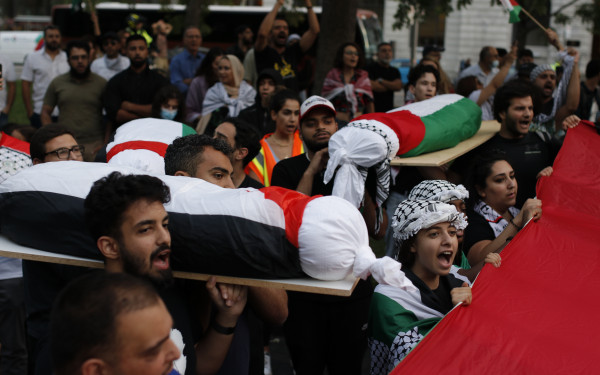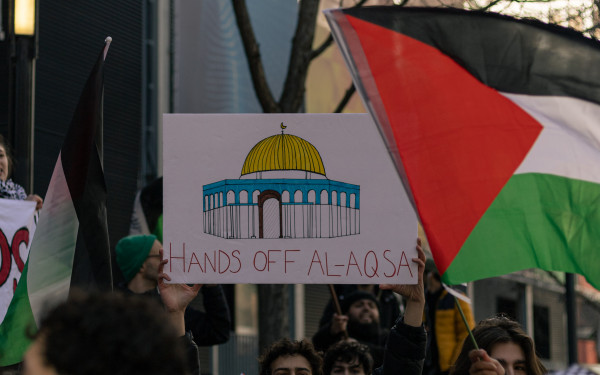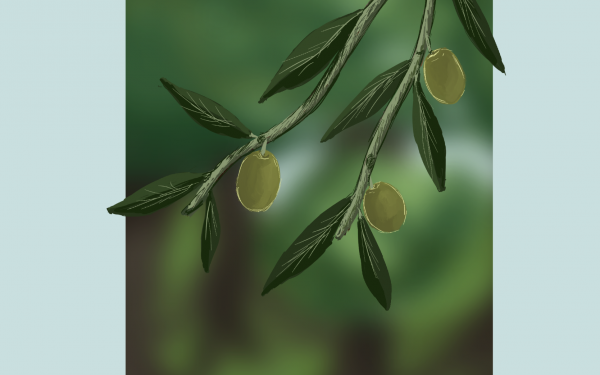75 years of Palestinian Resistance: Stories of the Nakba and Art Exhibition
Palestinian Couple Shares Experiences Through Art and Intergenerational Storytelling
On April 29, The Palestinian Youth Movement in Montreal organized an event to commemorate the 75th year of the Palestinian people's ongoing Nakba. The event featured Najat El-Khairy’s art and a panel with her husband, Mazen El-Khairy, a Nakba survivor.
The Nakba, meaning catastrophe in Arabic, refers to the displacement of Palestinians for the creation of Israel. Palestinians who still reside in Palestine live under colonial oppression, in refugee camps on their own land, or in the diaspora.
Sarah Abdelshamy, a Palestinian Youth Movement (PYM) member and organizer, explained “We are a group of Palestinian and Arab youth who organize in Montreal to put together different events. We organize for the liberation of Palestine and to confront and combat Zionism here in Canada.”
PYM organized the event with Mazen and Najat El-Khairy, both pillars in Montreal’s Palestinian community, to showcase Najat’s unique artform and Mazen’s life experiences. “This cultural event is meant to show that we need to safeguard our cultural heritage because it is constantly at risk of being erased,” Abdelshamy explained.
Born only nine days after the Nakba in 1948, Najat El-Khairy has devoted her life to her heritage. She created an artform that mimics traditional Palestinian embroidery on porcelain with a fine pen. El-Khairy’s vision was to create this unique artform on a non-perishable medium to preserve the Palestinian people's heritage and culture.
“My art is something that comes out of my heart. Porcelain is a symbol of the Palestinian resistance and resilience to say we are here, and we will stay here. I really want to document all of these beauties and heritage,” said Najat. “75 years ago, they lost their land, their livelihoods, their lives. All this is caused by the occupation of our land by the Israelis. When I paint, I want to tell the story of my people and how we were kicked out of our land and how we yearn to go back to our land.”
Hanging along the walls were Najat's porcelain pieces, each painting a picture of traditional Palestinian culture. Almost every piece has a hidden outline of Palestine’s map, usually between tree branches. The exhibition also included the artist's collection of authentic Thobs, traditional Palestinian dresses, with embroidery; each showcasing the specific style of embroidery of the different villages across Palestine.
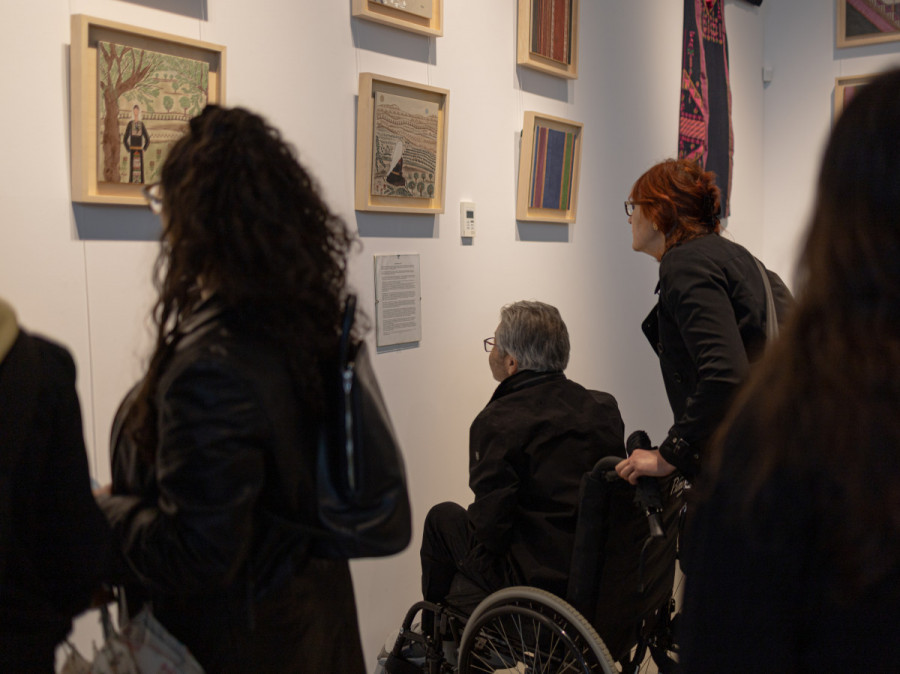
“Our Palestinian embroidery suffered as well as its people. It has been tampered with and appropriated by the occupier over time. This appropriation was another theft of our cultural heritage along with our land,” Najat explained. “I was reflecting on the significance of my name and year of birth in the context of the Palestinian struggle. As it happens, ‘Najat’ means rescue and survival. To me, these were not just mere coincidences. They were the driving force behind my creation.”
Mazen El-Khairy, the artist's husband, was nine years old when his family was removed from his village, Ramleh, after a two-month war with Israeli soldiers. Following his wife's speech, Mazen stood in her place and shared his experiences with the audience.
As a child, he recalls cleaning the rust off bullets and organizing them for the men. Once Ramleh was under Israeli occupation, “Each family was allowed one suitcase, and out you go. I remember we were all lined up on the main street, women crying and wailing, and it was Ramadan,” Mazen recalled. “We were not allowed to walk on the asphalt road, we had to go into the wilderness. They were shooting over our heads to make us run.”
The gallery was silent and unmoving as Mazen recounted the difficult memories of a nine-year-old boy. “My mother told me that for two months I had nightmares because of what I saw. We saw dead people. Every now and then, a truck would pass with a Palestinian with a hood over his head being beaten to show us that [they] are in power.”
Years after fleeing Palestine completely as an adult, Mazen became a Canadian citizen and was able to enter Palestine once again where he visited his grandfather’s home, which was turned into a psychiatric facility. “Believe me, if you go there and see the beauty of that area, anybody who has any sickness can recover.”
Visiting his home with his children and grandchildren, Mazen expressed how difficult it was. “The piano where my mother and my aunties used to play was exactly in the same place. They changed nothing in the house except adding a staircase” He said. “I couldn’t go to Palestine all these years. It was very traumatic. This is how we, as Palestinians, suffered,” Mazen said.
The gallery was overflowing with different generations of Palestinians and supporters. “There’s the old adage of ‘the old will die and the young will forget.’ What we are trying to showcase here is that the young will not forget,” Abdelshamy said.

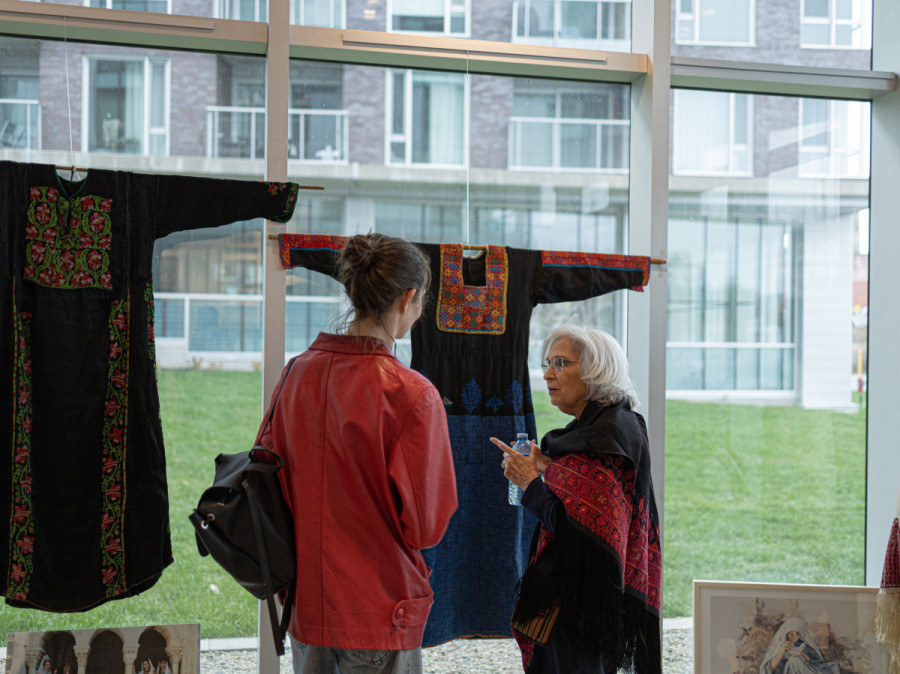
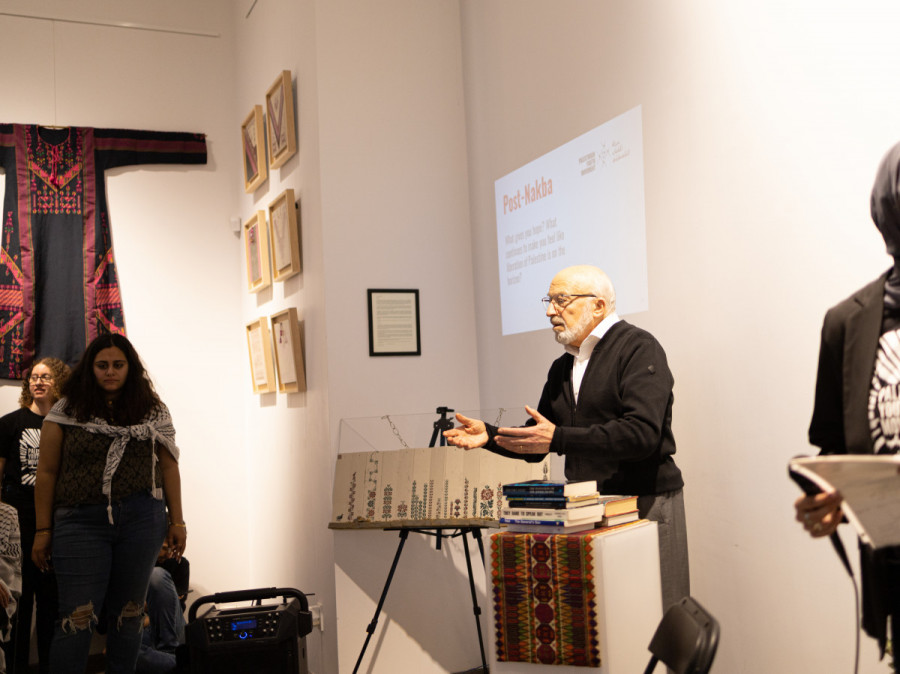
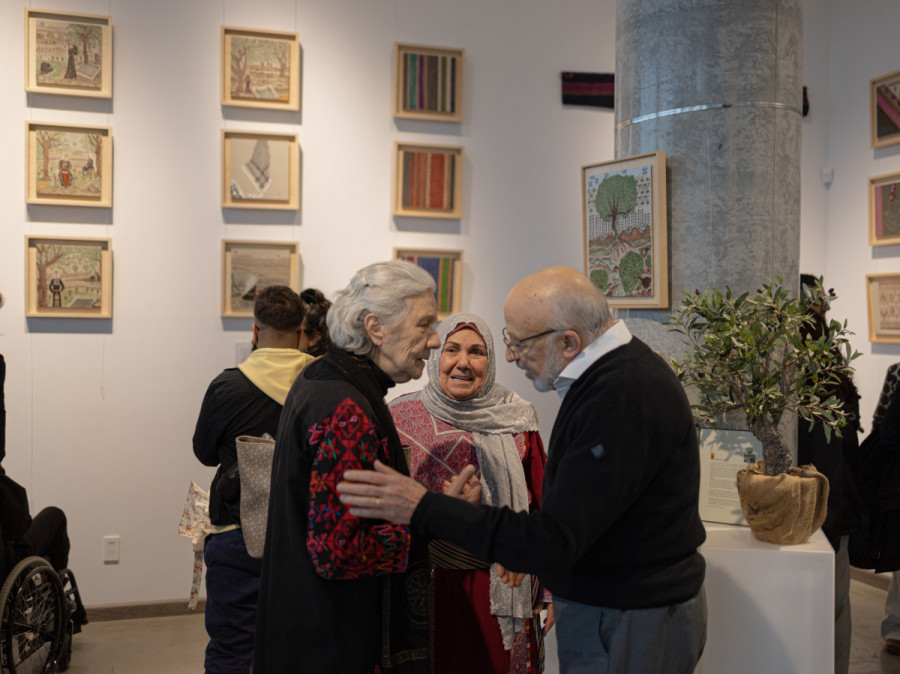
_600_832_s.png)

